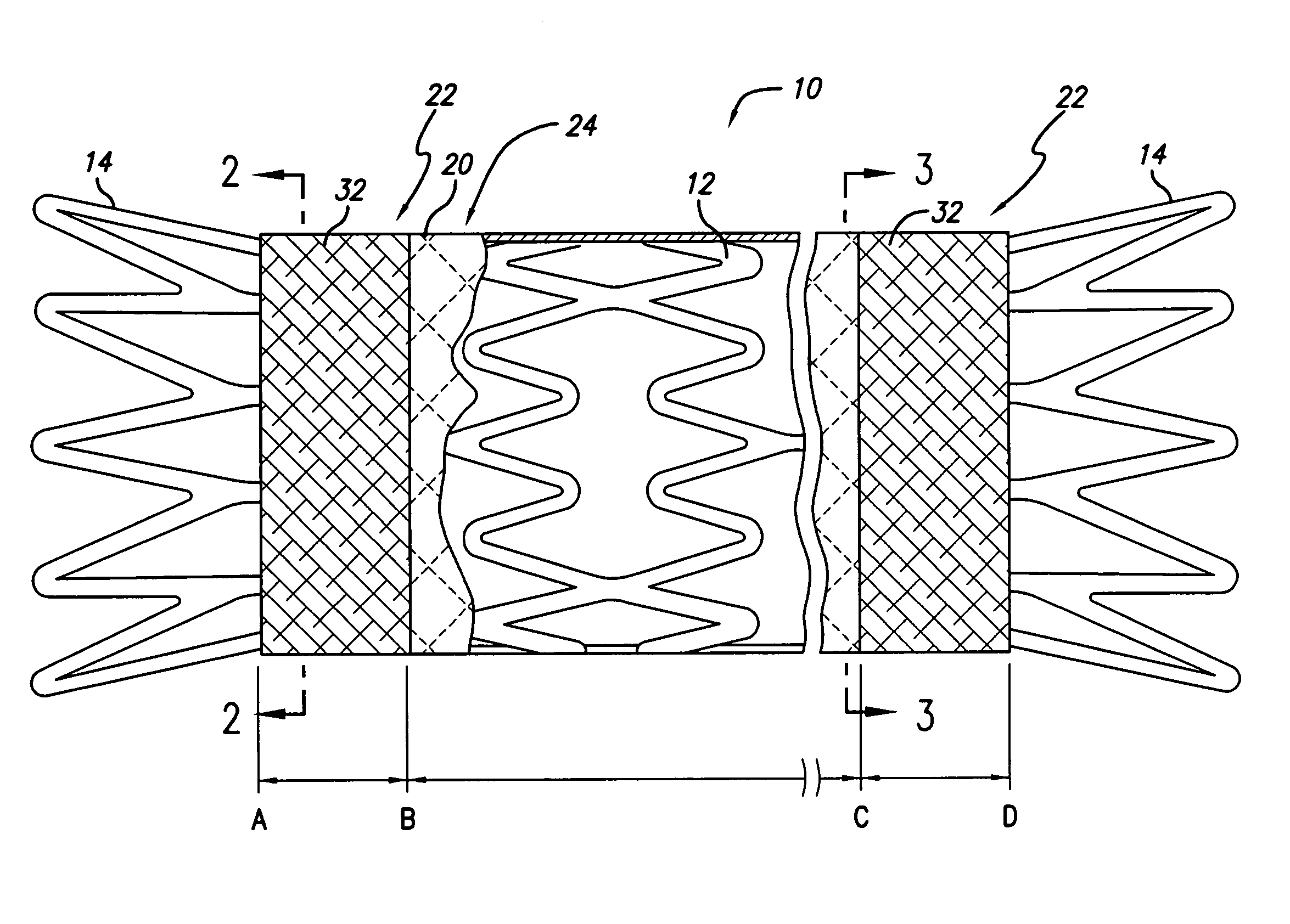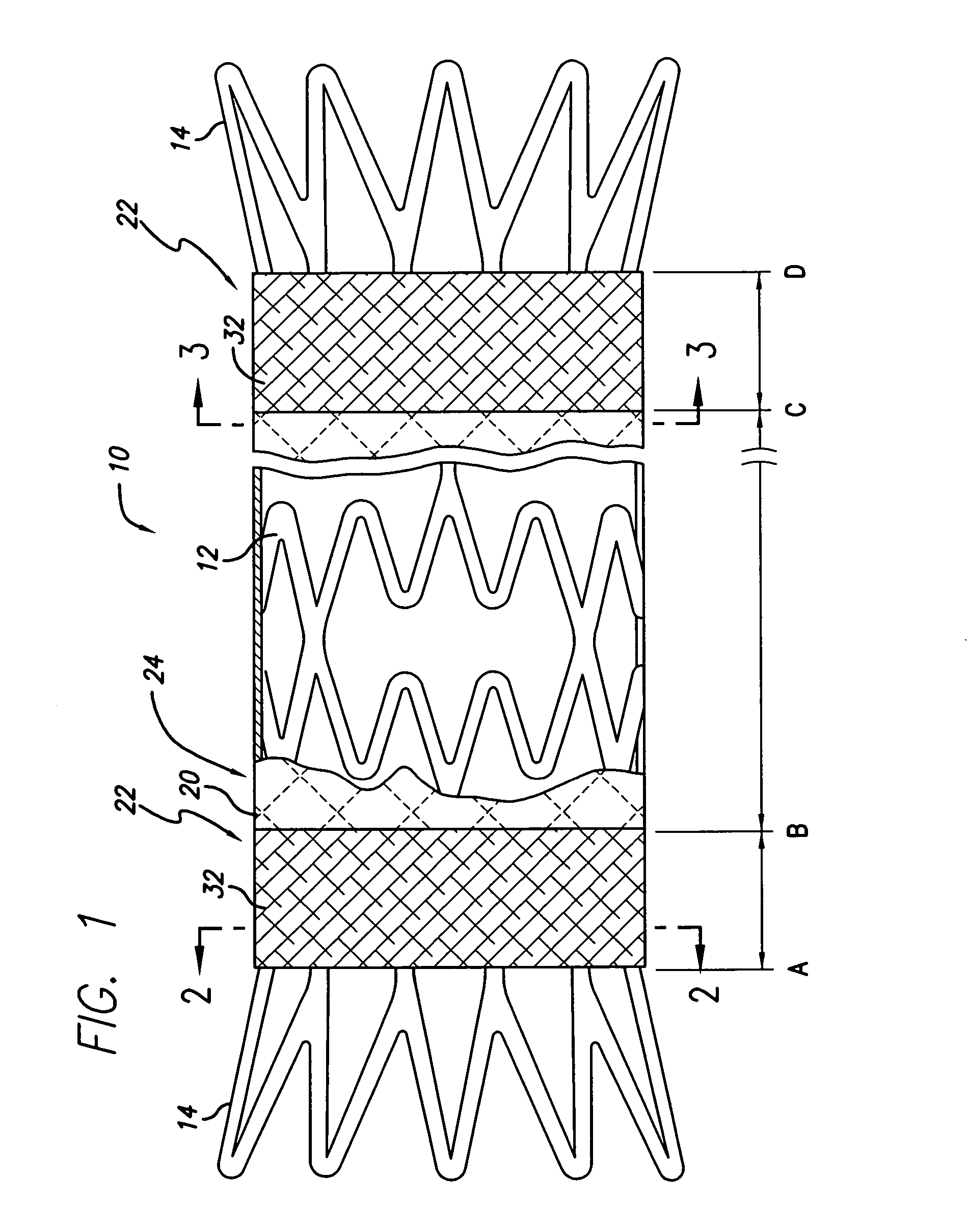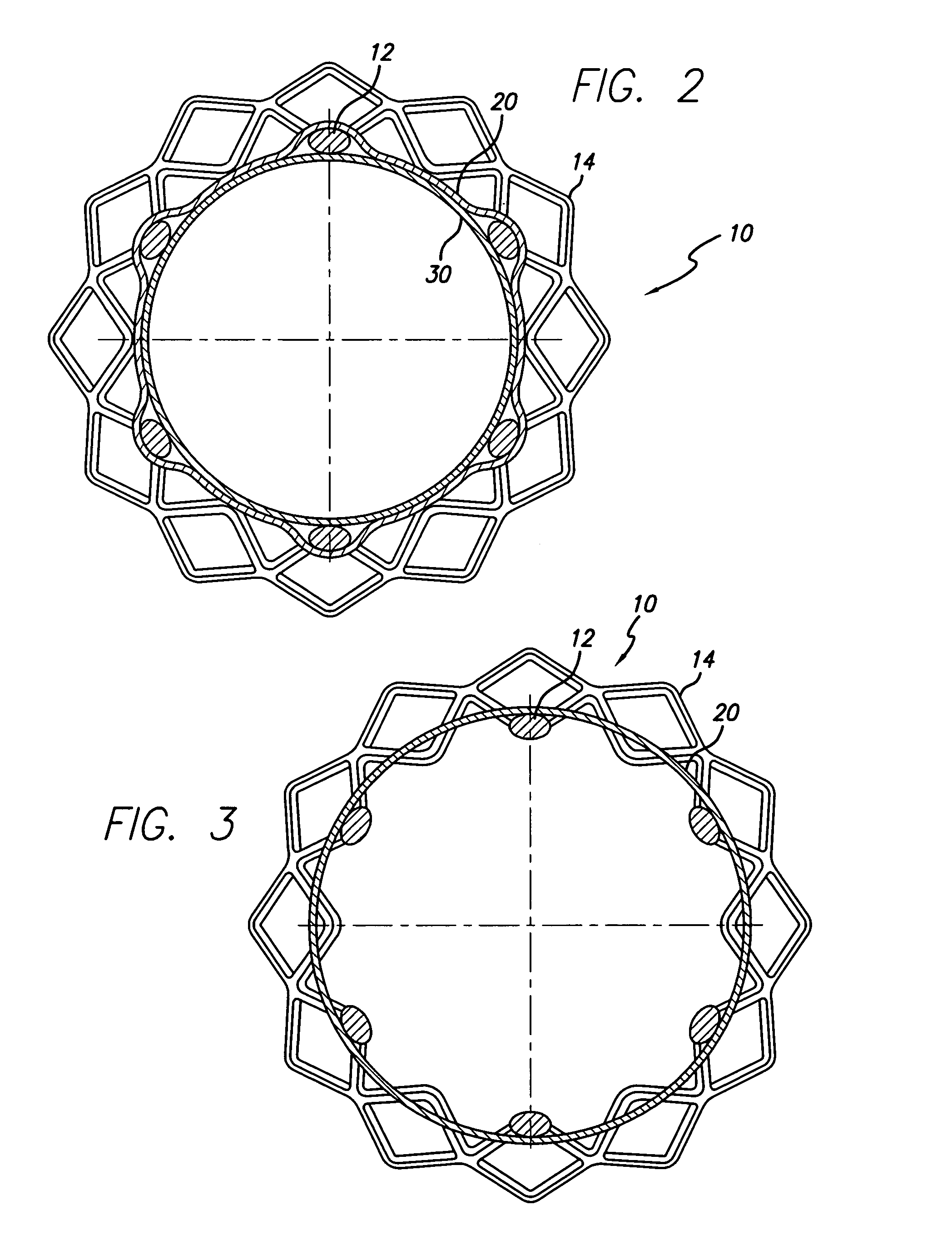Covered stent with encapsulated ends
a stent and end technology, applied in the field of encapsulated ends of stents, can solve the problems of serious liver damage, fatal complications, restenosis of the vessel, etc., and achieve the effect of retaining flexibility and enhancing flexibility
- Summary
- Abstract
- Description
- Claims
- Application Information
AI Technical Summary
Benefits of technology
Problems solved by technology
Method used
Image
Examples
example 1
[0037]Two memotherm (shape memory alloy stent, product of Angiomed, Division of C. R. Bard, Inc.) biliary stents (S1 and S2), partially encapsulated according to the present invention, were loaded into a 10 French delivery system used for a standard covered biliary stent. The stents were 10 mm×60 mm. The pulling force necessary to load the stents (the force between the outer sheath and the stent) was measured as follows:
S1=6.3N
S2=3.5N
[0038]In comparison, the loading force for a fully encapsulated stent is approximately 50N. After loading the samples S1 and S2 into a pullback delivery system, both were deployed into a glass biliary duct model placed in a 37° C. water bath. All deployment went smoothly and no significant covering damage was observed. Thus, the partially encapsulated stents could be loaded employing a much-reduced force without being compromised structurally.
example 2
[0039]Three prototypes (P1, P2, and P3) were built using a Gamma 2 (Flexx) design memotherm stent, 12 mm×120 mm. These prototypes were partially encapsulated according to the present invention. More particularly, the abluminal surface of each stent was covered with a tubular ePTFE material, leaving the regions near the stent ends uncovered (to flare outward and anchor the device). The luminal surface near each end of the stent was covered by a 9.95 mm±0.05 mm ring of ePTFE material. The stents were then subjected to heat and pressure so that the overlapping ePTFE material on the luminal and abluminal surfaces was bonded together. The prototypes were then loaded into a 10 French delivery system and were deployed into a glass biliary duct model (45°, 25.4 mm radius) that was placed in a 37° C. water bath.
[0040]The prototypes were loaded according to the standard loading technique used for loading fully encapsulated stents. This loading technique consists of compressing the stents by p...
PUM
| Property | Measurement | Unit |
|---|---|---|
| loading force | aaaaa | aaaaa |
| radius | aaaaa | aaaaa |
| diameter | aaaaa | aaaaa |
Abstract
Description
Claims
Application Information
 Login to View More
Login to View More - R&D
- Intellectual Property
- Life Sciences
- Materials
- Tech Scout
- Unparalleled Data Quality
- Higher Quality Content
- 60% Fewer Hallucinations
Browse by: Latest US Patents, China's latest patents, Technical Efficacy Thesaurus, Application Domain, Technology Topic, Popular Technical Reports.
© 2025 PatSnap. All rights reserved.Legal|Privacy policy|Modern Slavery Act Transparency Statement|Sitemap|About US| Contact US: help@patsnap.com



